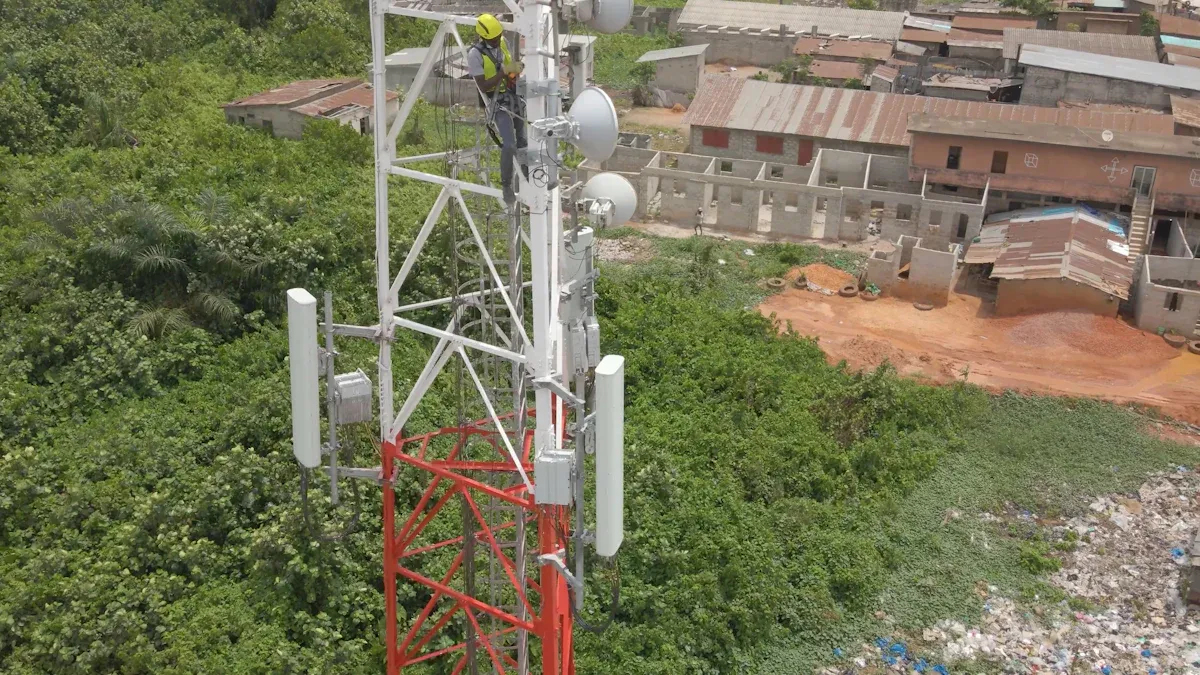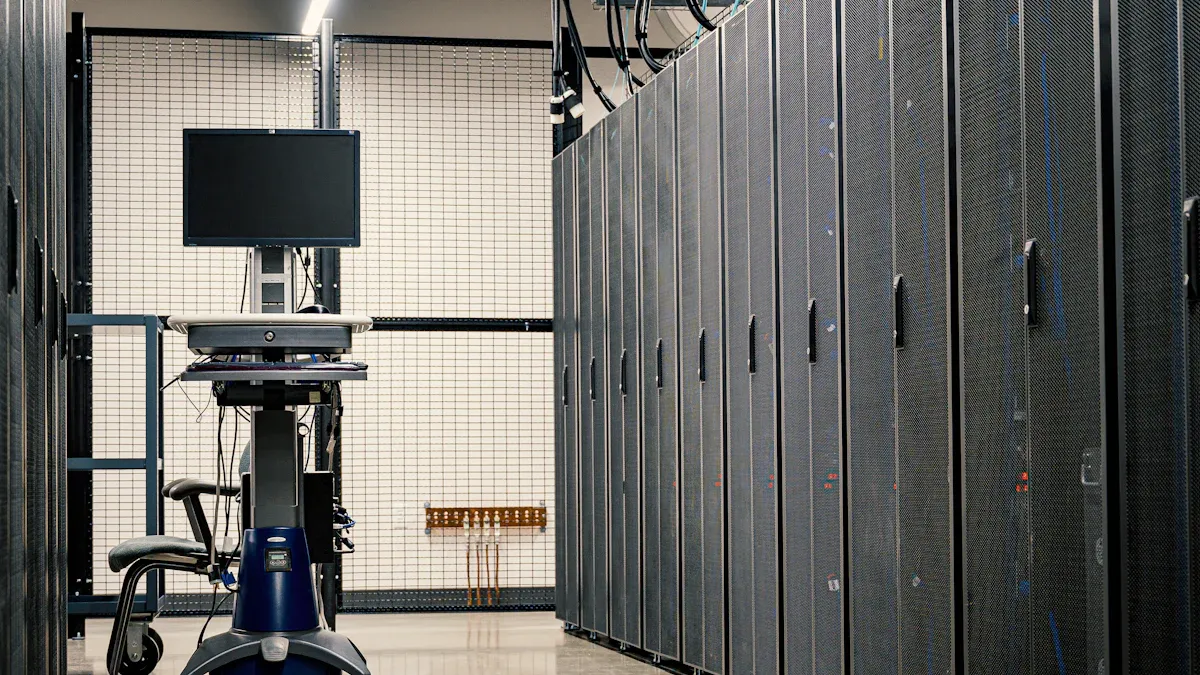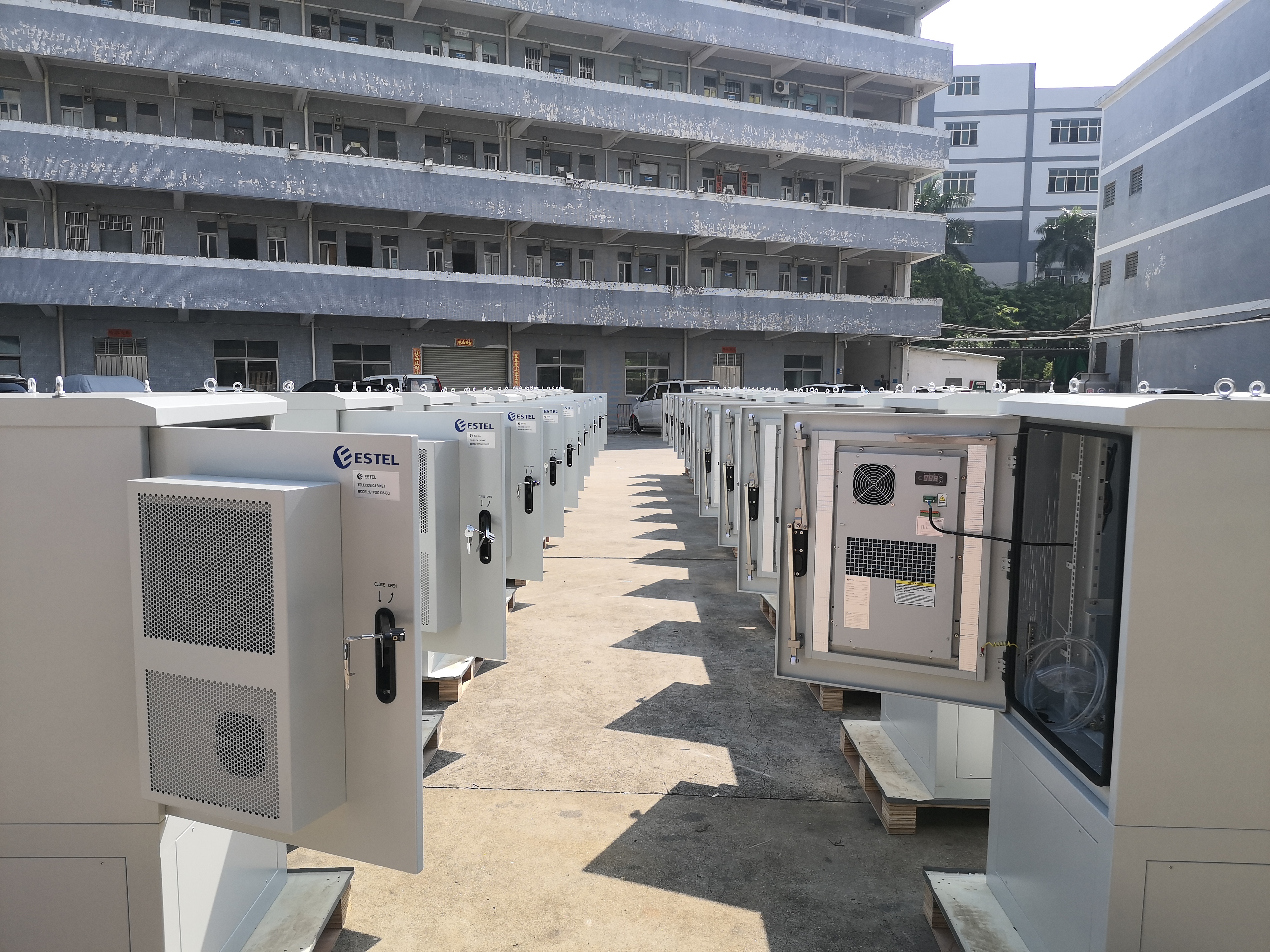Outdoor Telecom Cabinet requirements for communication equipment

Outdoor telecom cabinets protect communication tools from bad weather. They keep equipment working, improving the reliability of telecom networks. By covering delicate parts, they help systems stay strong and avoid breaks. Following industry rules makes sure these cabinets handle tough weather, giving lasting safety to your setup.
Key Takeaways
Pick the right size cabinet for now and later needs. This avoids crowding and makes fixing things easier.
Use tough materials like steel or aluminum to handle weather and rust. This helps the cabinet last a long time.
Think about cooling, like vents or cooling systems, to stop overheating. This keeps your equipment working well.
Get security features like strong locks and remote checks to stop theft or damage.
Check NEMA and IP ratings to see if the cabinet can handle your weather. This keeps your telecom network reliable.
Size and Space Considerations

Equipment Fit
When picking an outdoor telecom cabinet, make sure it has enough room for your equipment now and in the future. The right size stops overcrowding, which can cause overheating and make repairs harder. Bigger cabinets are better for setups with lots of cables. They help keep cables neat and easy to manage. Planning ahead saves money and keeps your system ready for changes.
Think about power setup too. A tidy cabinet makes power connections easier to handle. It also lowers the chance of messy cables. This neatness helps you work faster and fix problems quickly.
Accessibility
An outdoor telecom cabinet should be simple to open for repairs or upgrades. Some cabinets have removable panels or sliding trays. These features make it easier to reach equipment without disturbing everything else.
Doors and access points are important too. Cabinets with two doors or multiple openings let you work on one part without opening the whole thing. This is helpful in busy places where quick fixes are needed.
Tip: Always check if the cabinet design fits your needs. A good design saves time and effort during repairs.
By thinking about these things, you can pick an outdoor telecom cabinet that works now and stays useful later.
Material and Protection Grade
Material Strength
The material of an outdoor telecom cabinet is very important. Strong materials like stainless steel, aluminum, and galvanized steel are common. Stainless steel, especially grades 304 and 316, fights rust well. Grade 316 works best near saltwater because it has molybdenum. Aluminum is light and handles weather well, great for places needing less weight. Galvanized steel is strong and resists rust, often used on farms or in factories.
For example:
The Jesup Bridge in Iowa shows galvanized steel lasting 42 years near water.
The Burj Khalifa in Dubai proves aluminum resists rust in deserts.
The Nevada Solar One project shows galvanized steel handling heat and sunlight.
Weather Resistance
Outdoor telecom cabinets must survive tough weather. Aluminum and galvanized steel resist UV rays and temperature changes. Special coatings make them last longer. Aluminum has a natural layer that stops rust. Galvanized steel has a zinc coat to block corrosion. These features keep the cabinet working in bad conditions.
Tip: Pick materials that work well in your area's weather. This helps the cabinet last longer.
Protection Ratings
Protection ratings show how well a cabinet handles the environment. NEMA and IP ratings are the main standards. NEMA ratings, used in the U.S., check for dust, water, and damage. IP ratings, used worldwide, measure protection from solids and liquids. Here's a simple chart:
Rating | What It Protects Against |
|---|---|
NEMA 4 | Stops water splashes and hose sprays. |
NEMA 4X | Adds rust protection, good for tough places. |
IP55 | Blocks some dust and low-pressure water sprays. |
Knowing these ratings helps you pick the right cabinet for your needs.
Cooling and Ventilation Systems

Passive Cooling
Using natural airflow
Passive cooling uses natural air to keep the cabinet cool. This works best in places with mild weather. Properly designed vents allow air to flow and stop heat buildup.
Louvers and vents for cooling
Louvers and vents help hot air escape from the cabinet. They also block water and dirt from getting inside. A cabinet with good vents keeps equipment from overheating.
Note: Passive cooling saves energy and money but may fail in very hot areas.
Active Cooling
Fans and air conditioners
Active cooling uses fans or air conditioners to control heat. Fans improve airflow, great for hot places. Air conditioners give exact cooling for very hot areas. These systems keep equipment working even in tough conditions.
Heat exchangers for saving energy
Heat exchangers move heat out of the cabinet. They are energy-saving and work in many climates. Using heat exchangers lowers energy use while keeping equipment cool.
Why It’s Important | |
|---|---|
Natural Cooling | Uses outside air, good for mild weather. |
Fan Cooling | Boosts airflow, stops heat in hot areas. |
Heat Exchanger Cooling | Removes heat, works well in different climates. |
Air Conditioning | Gives exact cooling, needed for very hot places. |
Thermal Insulation
Materials for stable temperatures
Insulation keeps the cabinet’s temperature steady. Foam or fiberglass is often used. These materials protect equipment from extreme heat or cold.
Stopping moisture and condensation
Insulation also stops moisture, which can harm electronics. Using water-resistant materials and seals protects against humidity. This is crucial in wet or changing climates.
Tip: Combine active cooling with insulation for the best protection in harsh environments.
Security Features
Stopping Theft
Strong locks and tamper-proof designs
Keeping your equipment safe starts with strong locks. Special locks like anti-theft three-point locks stop unwanted access. Hidden locks and tough hinges add extra safety. These features make it harder for anyone to break into the cabinet. Alarms help by warning you if someone tries to tamper with it.
Main Theft Prevention Features:
Anti-theft three-point locks.
Hidden locks for extra protection.
Strong hinges to block forced entry.
Alarms for instant warnings.
Strong doors and hinges
Tough doors and hinges make the cabinet harder to break into. They are built to resist prying and other attacks, keeping your equipment safe inside.
Controlling Access
Keypads, RFID, and fingerprint systems
Modern systems like keypads, RFID, and fingerprint scanners make access secure and easy. Only approved people can open the cabinet. RFID systems also track who opens it and when, adding more security.
Benefit | What It Does |
|---|---|
Better Accountability | Tracks who uses keys and when. |
Easier Operations | Reduces mistakes by managing keys automatically. |
Safer Risk Management | Creates reports to show compliance with rules. |
Remote monitoring and alarms
Remote systems let you check cabinet activity from anywhere. Alarms notify you right away if someone tries to break in, so you can act fast.
Physical Safety
Preventing vandalism and unwanted access
Outdoor cabinets can face damage from vandalism. Strong materials like aluminum keep them safe. Anti-tamper features like motion sensors and alarms warn you of any issues. Special coatings stop graffiti and make cleaning easier.
Physical Safety Features:
Tough materials to handle impacts.
Strong locks to stop tampering.
Motion sensors and alarms for quick alerts.
Coatings to resist graffiti and stay clean.
Tough materials and anti-drill designs
Strong materials and anti-drill features protect the cabinet from damage. These designs keep your equipment safe, even in risky areas.
Tip: Place the cabinet in bright, open areas to avoid vandalism.
Compliance and Standards
NEMA Ratings
What NEMA ratings mean
NEMA ratings show how well a cabinet handles tough conditions. They test protection against dust, water, and damage. For example, NEMA 3 protects from rain and dust. NEMA 4X adds rust protection, great for harsh places. These ratings help you pick the right cabinet for your needs.
Picking the best NEMA rating
Choose a NEMA rating based on where the cabinet will be. For outdoor use, NEMA 4 or 4X is a good choice. These ratings protect against rain, wind, and water sprays. If the area has saltwater, NEMA 4X gives extra rust protection.
IP Ratings
What IP codes mean
IP ratings use two numbers to show protection levels. The first number is for dust, and the second is for water. For example, IP55 means it blocks some dust and low-pressure water. Knowing these codes helps you choose a strong cabinet.
Picking the right IP rating
Pick an IP rating based on your location. In dusty places, IP65 blocks all dust. In rainy areas, IP66 keeps water out. Matching the IP rating to your environment keeps your equipment safe.
Industry Guidelines
Following telecom safety rules
Following safety rules makes sure your cabinet works well. These rules lower risks like equipment breaking or accidents. Sticking to them improves your system’s reliability.
Why certifications matter
Certifications prove the cabinet meets safety standards. They show it can handle tough conditions. Certified cabinets protect your equipment and save money on repairs.
Standard Type | What It Does |
|---|---|
NEMA Ratings | Shows how well the cabinet handles dust, water, and damage. Higher ratings mean better protection. |
IP Ratings | Rates how much the cabinet blocks solids and liquids. |
Compliance Importance | Ensures safety, lowers risks, and improves system performance. |
Tip: Always check a cabinet’s ratings and certifications before buying. This ensures it fits your needs.
Picking the right outdoor telecom cabinet is very important. It protects your equipment and keeps it working well. Cabinets made for tough weather help avoid breakdowns. Choosing cabinets that meet industry rules improves network performance. Think about size, material, cooling, and security when deciding. This helps protect your equipment and ensures it lasts a long time.
Tip: Choose cabinets that match your area's weather and needs.
FAQ
1. What does an outdoor telecom cabinet do?
An outdoor telecom cabinet keeps equipment safe from bad weather, dust, and damage. It helps your tools work well and last longer by creating a secure space.
2. How do I pick the right cabinet size?
Choose a cabinet that fits your equipment now and later. Make sure there’s space for cables and power setup to keep things neat and easy to fix.
3. Why are NEMA and IP ratings needed?
NEMA and IP ratings show how well a cabinet blocks dust, water, and damage. Picking the right rating helps your cabinet work well in your area.
4. What cooling system is best for hot places?
Fans or air conditioners are best for hot areas. They keep the cabinet cool and stop equipment from overheating.
5. How can I keep my cabinet secure?
Use strong locks, hidden designs, and systems like RFID or fingerprint scanners. Alarms and remote checks add extra safety to protect your tools.
Tip: Check your area and equipment needs before choosing a cabinet.
CALL US DIRECTLY
86-13752765943
3A-8, SHUIWAN 1979 SQUARE (PHASE II), NO.111, TAIZI ROAD,SHUIWAN COMMUNITY, ZHAOSHANG STREET, NANSHAN DISTRICT, SHENZHEN, GUANGDONG, CHINA

